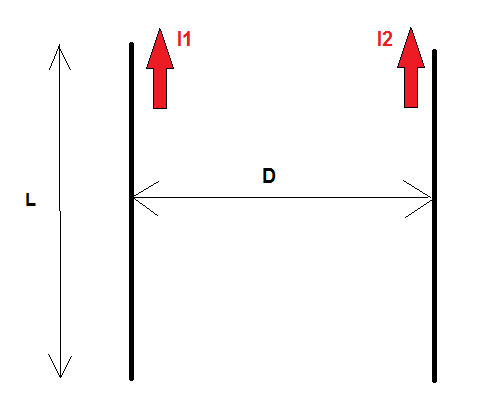Force Between Two "Short" Current-Carrying Wires
In attempting to solve a community problem posted recently, I derived a formula for the magnetic force between two current-carrying wire segments of arbitrary length (but same for both) and arbitrary spacing. These may well be parts of infinite line segments, but the formula only accounts for the interactions between the two finite segments. The derivation is rather tedious, so I won't post it right now:

The formula ends up being:
For conductor length much larger than the spacing, the result reduces to:
The second formula is the well-known expression for the force between two long wires, so that's a good sign. I have also confirmed the result with numerical simulations.
Does anybody else know off the top of their head that this is correct?
Easy Math Editor
This discussion board is a place to discuss our Daily Challenges and the math and science related to those challenges. Explanations are more than just a solution — they should explain the steps and thinking strategies that you used to obtain the solution. Comments should further the discussion of math and science.
When posting on Brilliant:
*italics*or_italics_**bold**or__bold__paragraph 1
paragraph 2
[example link](https://brilliant.org)> This is a quote# I indented these lines # 4 spaces, and now they show # up as a code block. print "hello world"\(...\)or\[...\]to ensure proper formatting.2 \times 32^{34}a_{i-1}\frac{2}{3}\sqrt{2}\sum_{i=1}^3\sin \theta\boxed{123}Comments
@Laszlo Mihaly @Ashish Siva What do you think?
Log in to reply
yes, I attempted the derivation and obtained the same result. Musn't be a coincidence. ;)
I would calculate the vector potential ( easier than Biot Savart), take the gradient and integrate the force over the length of the other wire. Too busy with real work to do it.